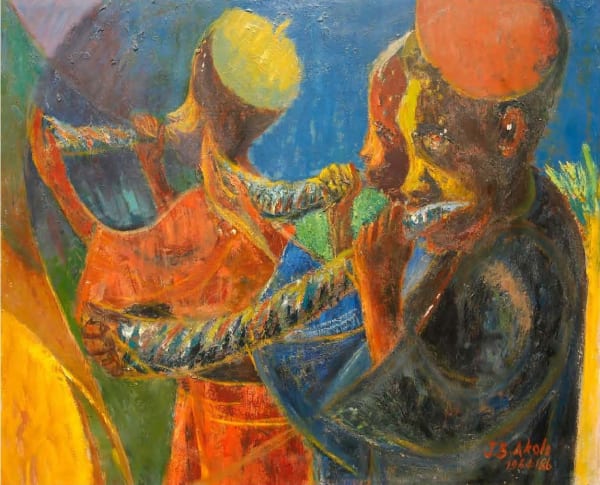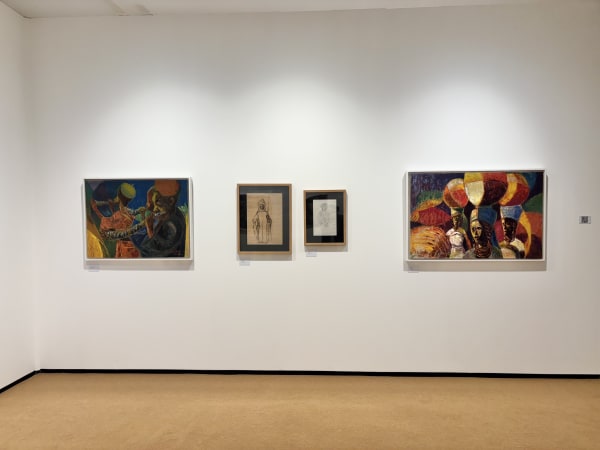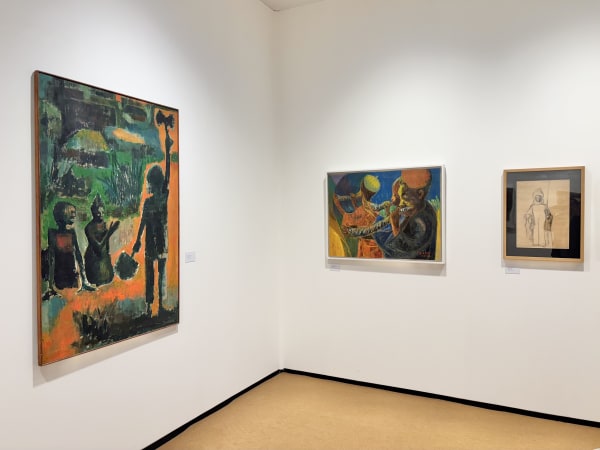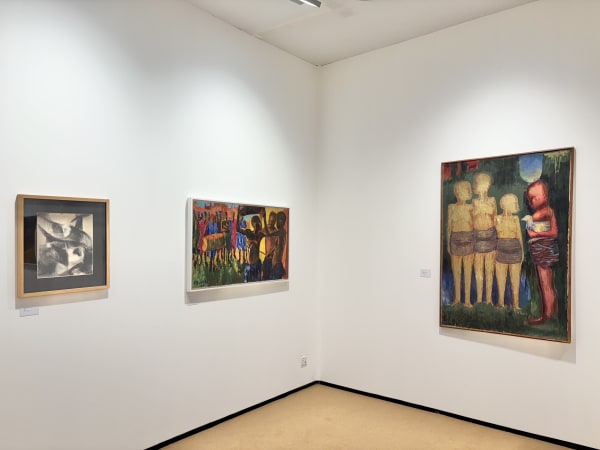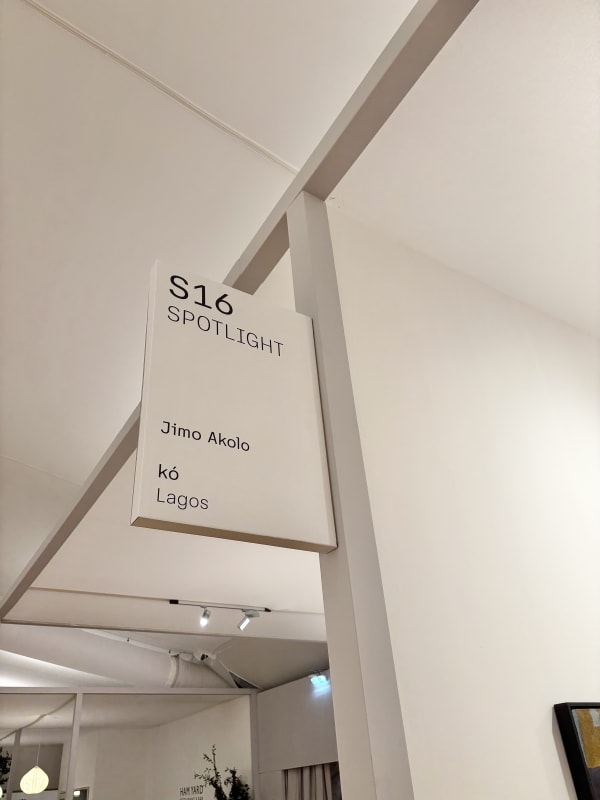Frieze Masters: Jimo Bola Akolo
kó is pleased to present a solo presentation of renowned Nigerian artist Jimo Bola Akolo (1934-2023) at Frieze Masters at The Regent’s Park, London.
The project is included in the Spotlight section, which features solo presentations by ground-breaking artists of the twentieth century. This presentation will feature a selection of Akolo’s oil paintings and paper works spanning the 1960s-1990s. As a painter, Akolo delved deeply into Nigerian cultural traditions and folklore, drawing inspiration from his experiences in Northern Nigeria. His paintings incorporate bold colours, loose brushstrokes, and geometric forms, often referencing designs and patterns from Hausa architecture.
Jimo Akolo left an indelible mark on the trajectory of modern art in Nigeria, playing a pioneering role in the formation of the influential Zaria Art Society. Coined the “Zaria Rebels,” the Zaria Art Society was formed in 1958 by a group of university art students at Nigeria’s first university art department at the Nigerian College of Arts, Sciences, and Technology, who rejected the Western-centric educational framework in favour of prioritising indigenous artistic styles and narratives. The Zaria Art Society emphasized the idea of “natural synthesis,” bridging a Western art educational framework with Nigeria’s history and cultural traditions. Akolo was known in some circles as the “rebel of rebels,” becoming a founding member and later breaking off from the group. Akolo and his peers in the Zaria Art Society would come to envision a new modernist vision for Nigerian art, creating a new visual vocabulary at the dawn of Nigeria’s independence in 1960.
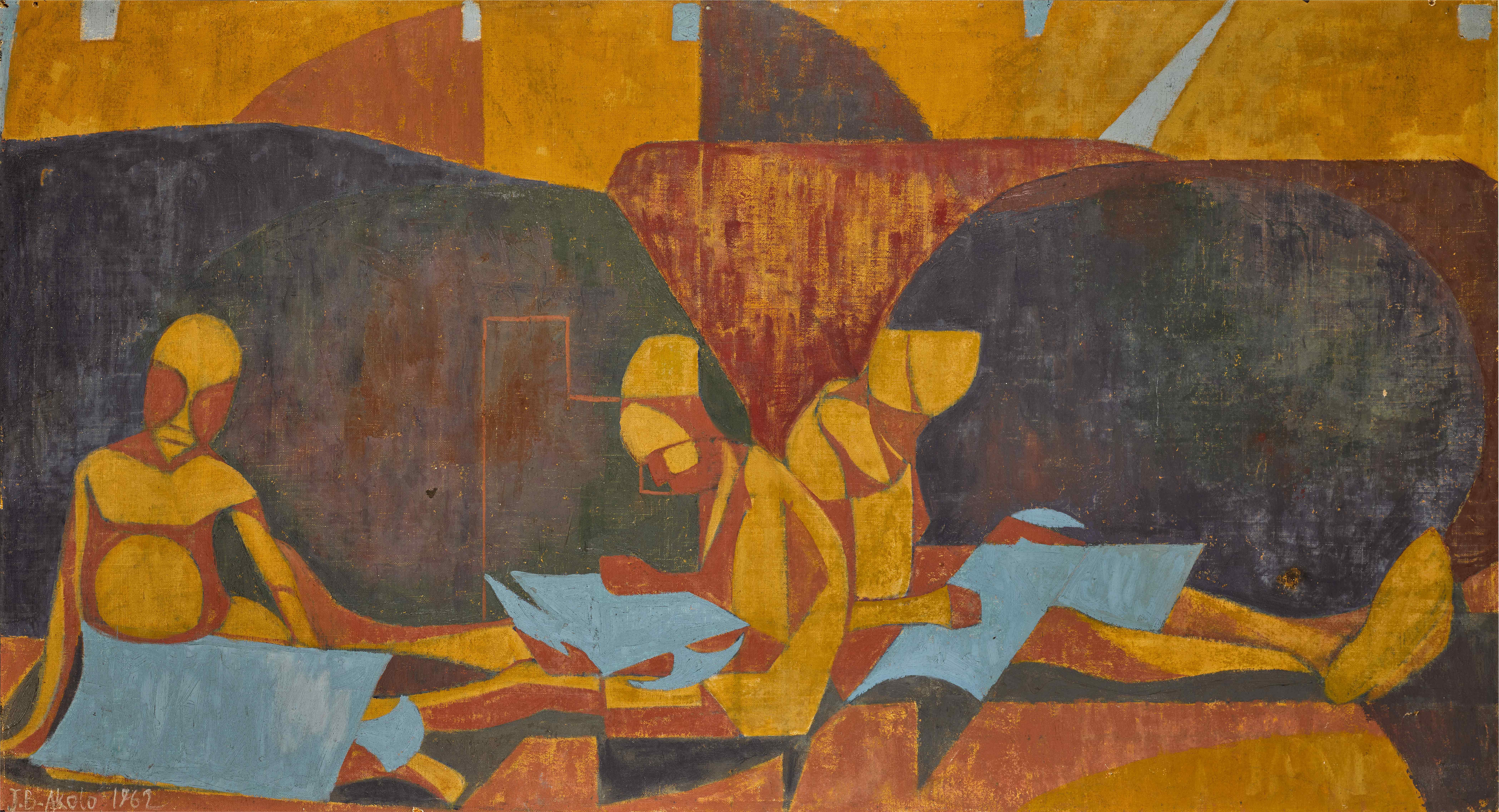
Born in Egbe, Kogi State, Nigeria in 1934, Jimo Akolo’s artistic disposition was sparked-off by his grandfather, a master weaver of exquisite baskets at Egbe. Akolo's artistic training began under the tutelage of Dennis Duerden, a colonial education officer who became the curator of the Jos Art Museum. In this early period, Akolo was featured in the 1956-57 traveling exhibition, Paintings by Nigerian Schoolboys, organized by New York's Museum of Modern Art, traveling across the United States. While still a student at Keffi Secondary School, this MOMA traveling exhibition was Akolo’s first ever exhibition.
Akolo’s early artistic talent won him several prestigious awards. He won the First Prize for Drawing and painting at the Northern Nigerian Self-Government Celebration Exhibition in 1959 and was awarded Nigeria’s National Cultural Trophy in 1962. After his education at the Nigerian College of Arts, Sciences, and Technology, Akolo studied at the Hornsey College of Art in London, and Indiana State University, USA. Akolo received a Masters of Science in Education from Indiana State University in 1966 and a doctorate degree in Art Education in 1982.
On the international scene, Akolo’s early accolades included winning Best Artist of the Year (Mention of Honour) at the Sao Paulo Biennial in Brazil in 1962. He presented a solo art exhibition at the Commonwealth Institute London in 1964, participated in a group touring exhibition in London and Edinburgh in 1965, and participated in the Second Biennial Arts Exhibition in Havana, Cuba in 1986. In Nigeria, he had a solo show at the Nigerian Arts Council in 1970, participated in the All-Nigerian Festival of Arts, Ibadan in 1971, and the Visual Arts Exhibition of FESTAC 1977. In 1961, he was commissioned for a large three-piece mural at the Northern House of Assembly, Kaduna.
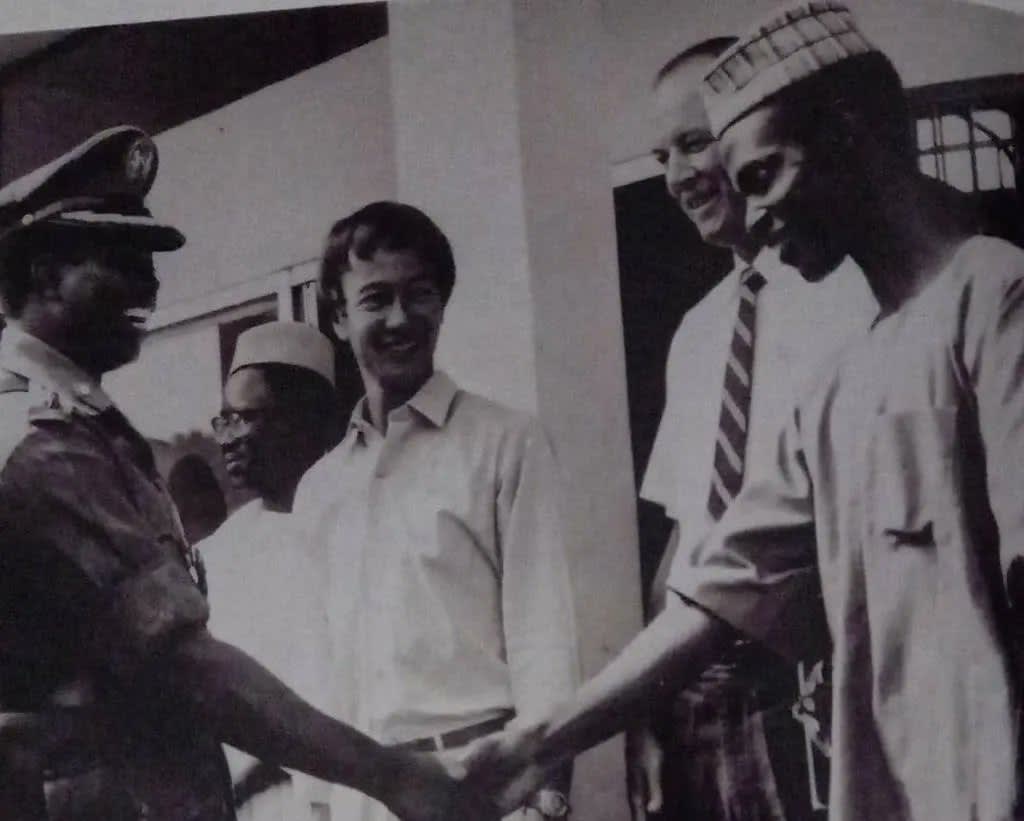
Jimo Akolo is a master storyteller of ordinary life in Northern Nigeria, including its landscapes and peoples. Known as a compulsive draughtsman, Akolo could be seen outdoors almost every weekend with the top of his easel protruding off the savannah grass of the outskirts of Zaria city. Ordinary people doing ordinary things and subjects such as the Fulani herdsmen and culture preoccupied his interest. He would return to these subjects over and over again with a refreshing aesthetic and philosophical perspective. His main colours are deep greens, adire blues, reds and browns derived from observing the mud buildings of Zaria City. His colouring technique combined a graphic, yet painterly rendition of hues and tones contrasted in triangular planes to give what one might refer to as a cubist engineering composition, where design informs his probing of the picture plane for structure and harmony.
Other subjects of Jimo Akolo are horse riders at festivals and at war, festive dancers, sportsmen, and landscapes. Akolo was also fascinated with subjects of traditional heritage and religious worship. When he takes on these subjects, they are interpreted in simple coloured planes, yet composed in a complex cubic style that may betray his love of engineering design. His paintings can be observed to contain a system of carefully constructed figures, objects, and spaces in compact picture planes where figure and ground are brought to harmonious equilibrium.
Akolo joined the staff of Ahmadu Bello University in 1966 and retired in 1998, working as a professor and administrator. Because of his quiet personality and one shy of public attention, his works and life as an artist received little public exposure in his later years. In 2019, the National Gallery of Art in Abuja, Nigeria, presented a retrospective of his works entitled Jimo Akolo: eminent scholar and painter, accompanied by a scholarly catalogue. kó organized an exhibition, The Essential Jimo Akolo, in 2022 in Lagos. Jimo Akolo died in 2023.
Jimo Akolo’s legacy remains a cornerstone of Nigeria’s cultural heritage, embodying a unique modernist language that celebrated the richness of Nigerian artistic expression.
-
 Jimo Akolo, Four Women and a chicken, 1962
Jimo Akolo, Four Women and a chicken, 1962 -
 Jimo Akolo, Islamic Scholars in Preparation, 1962
Jimo Akolo, Islamic Scholars in Preparation, 1962 -
 Jimo Akolo, The God of Thunder, 1964
Jimo Akolo, The God of Thunder, 1964 -
 Jimo Akolo, Test Of Manhood (Sharo), 1972
Jimo Akolo, Test Of Manhood (Sharo), 1972







